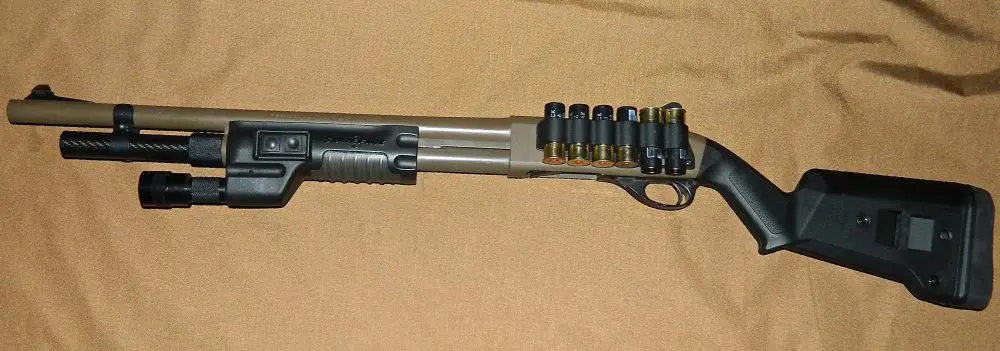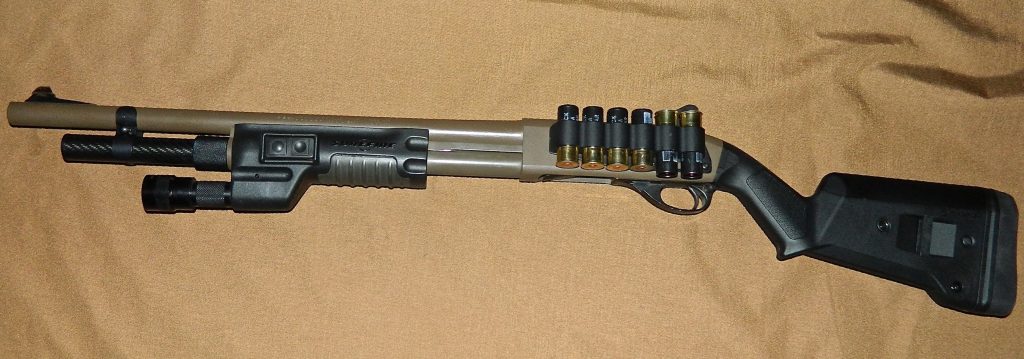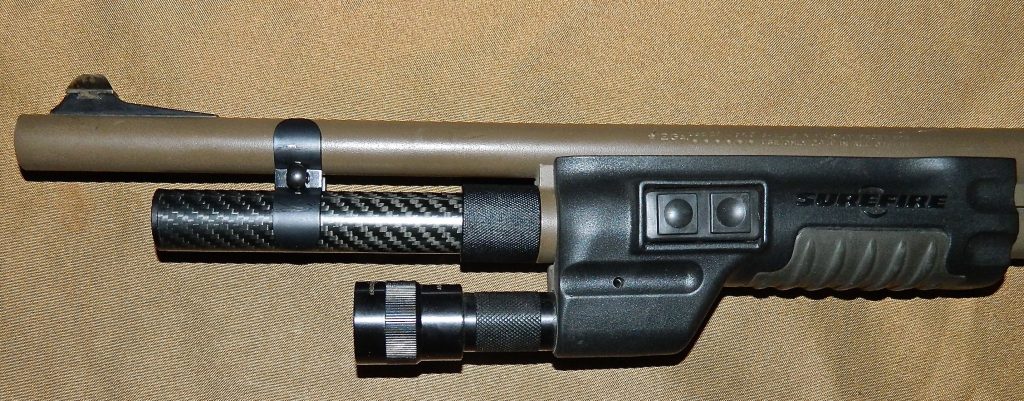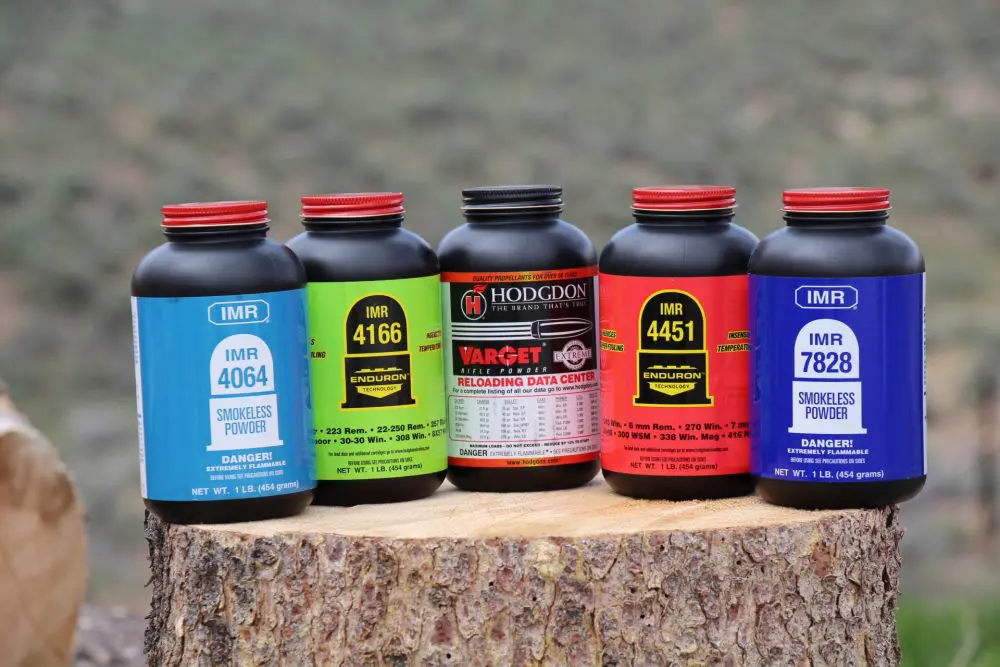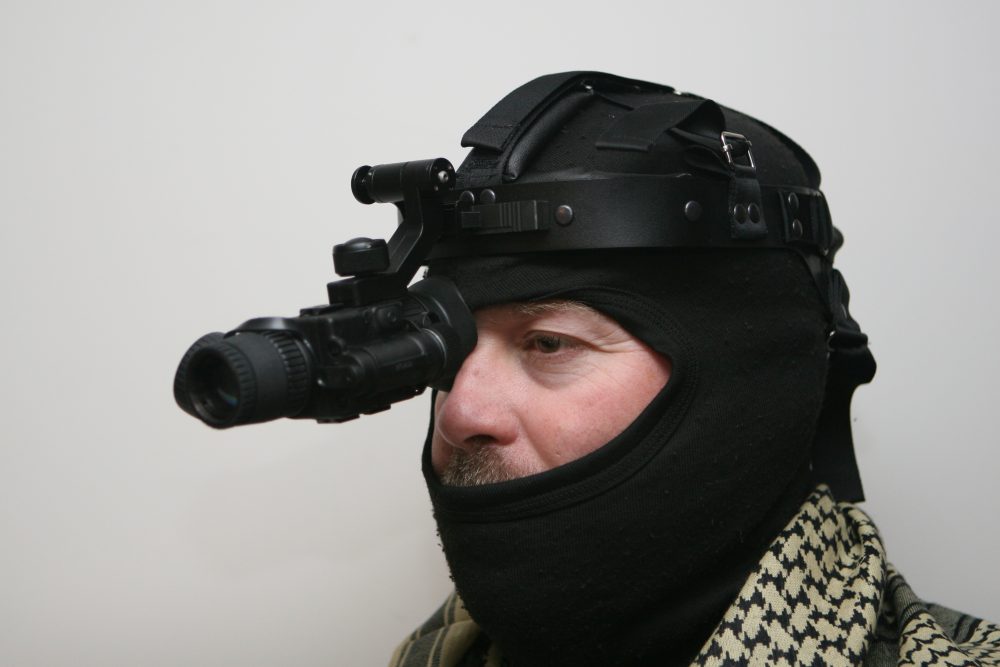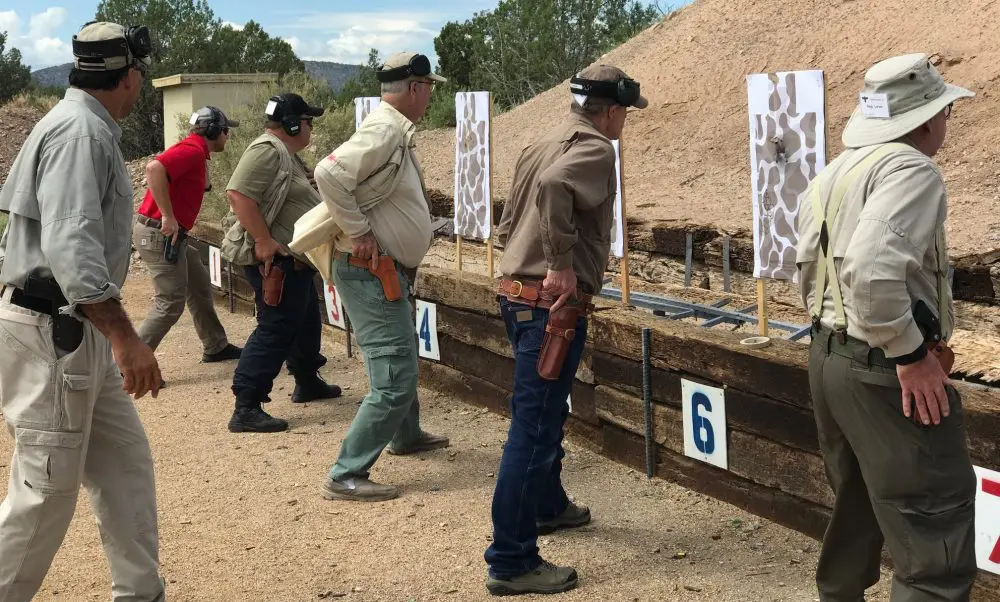Firearms myths abound: a hit by a .45 will tear off an arm, J-Frame revolvers are the perfect guns for women (despite the fact that it’s one of the hardest platforms to become proficient with), polymer frame guns are always more reliable and the list goes on.
More myths probably surround the shotgun than any other weapon system. Let’s debunk a few of them, then speak some truths.
Table of Contents
“THE MOST TERRIFYING SOUND IN THE WORLD”
First and foremost is the old “Just the sound of a pump shotgun’s action will cause any reasonable person to flee or make a mess in their tighty-whiteys.”
While that might be true for a reasonable person, the fact that you had to go to the shotgun in the first place means you are probably not dealing with a reasonable person.
Some people, quite simply, are not easily impressed. They may be under the influence of drugs or alcohol, or they just might not give a damn. In some depressed areas, young men have already accepted death as inevitable, and the only question is when they are going to die.
When I was a young rookie, I heard the old-timers talking about the psychological advantage of a shotgun because of the “terrifying” sound of working the action.
After a couple of years on the job, I encountered a non-compliant subject who reportedly might be armed. He went by the moniker “Tank” and would make an NFL offensive lineman look small in comparison.
Back then, Phasers (Tasers) only existed on Star Trek. I worked the action of my “psychological weapon,” whereupon the behemoth held his arms straight out to his sides and said, “Whatcha gonna do? Shoot me?” A dangerous situation to be sure, but not one that required shooting—at least not at that moment.
I was able to delay going hands-on or shooting Tank until backup arrived a few minutes later.
I never again gave any credence to the notion that the sound of an action being worked had any effect on anyone except perhaps the little blue-haired lady in the grocery store—and I wasn’t sure about her.
THEY HURT TO SHOOT
There is no doubt that a shotgun loaded with buckshot—and especially slugs—generates a lot of recoil. But using good technique and a stock properly sized to fit the shooter can alleviate felt recoil. People can shoot a firearm with a stock that is too short, but not one that is too long.
As most shotguns come from the factory, the stocks borderline to having a length of pull (LOP) too long for many men. To reach the trigger, people of smaller stature must place their body in an awkward position that actually increases felt recoil. The same thing can occur by wearing body armor or heavy clothing in cold weather.
To ascertain your LOP, first make sure the weapon is unloaded—and then check it again. Place your finger alongside the trigger (not on it) with the stock against your forearm. If there is less than an inch from the end of the stock to your elbow, the stock is probably too long.
My self-defense Remington and Mossberg shotguns are equipped with Magpul SGA stocks. Using a series of spacers, the LOP can be adjusted from 12.5 to 14.5 inches in half-inch increments. Both stocks are normally set as short as possible.
Author’s Remington 870 with Magpul SGA stock and TacStar Slimline SideSaddle. Shell heads facing down are buckshot. Case heads facing up are slugs. This means they can be accessed by touch in low light.
ROOM BROOM
Next up is the conception that the shotgun is an alley cleaner and the spread of the shot will take out anything in front of you. You don’t even need to aim it! In reality, the shot charge will not start to disperse until it is about seven to ten yards from the muzzle. Inside that distance, a shotgun must be aimed just like a carbine or handgun.
The flip side of this is the old wives’ tale that buckshot will spread one inch per yard, so it is not good for anything past 15 yards because an errant pellet may injure or kill the proverbial little girl down the street.
The reality is that most shotguns are capable of better patterns than that, and with some ammunition much better.
Shotguns are peculiar creatures in that many, even those with consecutive serial numbers, may prefer one brand of ammo to another. Pattern your shotgun with several different brands, find out what it likes, and stick to that brand and type.
My personal Remington 870 and Mossberg 590A1 shotguns are cylinder bore (the choke size most commonly encountered in self-defense and law enforcement shotguns). Either will shoot Federal Premium 00 buckshot with FLITECONTROL® wads into eight inches at 35 yards and almost that well with Hornady 00 buckshot with Versatite wads.
Mossberg 590A1 with Magpul SGA stock and TacStar Slimline SideSaddle. Sling removed for clarity.
Using quality slugs turns the shotgun into a long gun that is capable of good accuracy—especially with “rifle sights”—out to 75 yards or even farther. I have seen more than one shooter fire groups that measured around five inches with a simple bead sight. This is hardly comparable to a rifle, but certainly within minute-of-bad-guy.
TRUTHS
One actual drawback of shotguns is lower ammunition capacity. Yes, five 12-gauge rounds should solve most problems, but under stress, people miss their targets, and bad guys may continue an attack long enough to kill you even though they are dead on their feet and just don’t realize it.
Overall on-board capacity can be increased by adding one of several different models of a TacStar® (a Lyman brand) SideSaddle®. Both the original and new Slimline SideSaddles come with a free A-Zoom snap-cap.
Mossberg 590A1 with Magpul SGA stock and TacStar Slimline SideSaddle. Sling removed for clarity.
While some shotguns come from the factory with an extended magazine—the Remington 870 Tactical and Mossberg 590 series come to mind—adding a magazine extension is simple. TacStar has carbon-fiber extensions that are four times lighter but still stronger than traditional steel tubes.
I don’t usually load the shotgun to full capacity, but leave a “dead space” in the mag tube to enable a quick select slug drill.
Remington 870 has TacStar carbon-fiber magazine extension to reduce weight at the muzzle. Weaponlight is SureFire’s superb DSF-870. Light puts out 600 lumens with a tactical runtime of three hours.
Using Aguila 1¾-inch Minishells can also increase capacity. Each buckshot shell has 11 #4 buck pellets. These shells have two perceived drawbacks.
The first is that they only pattern well enough for indoor use. True, but when using the shotgun for home defense—possibly against more than one intruder—a larger spread may be more desirable.
The second and more important drawback is that the Minishells don’t function reliably in most shotguns. But if you have a Mossberg 500/590, a device called the OPSol Mini-Clip will solve the functioning problem and transform the shotty into a “high-capacity” firearm.
I have one in my home-defense Mossberg 590A1, and it increases the overall capacity using the Minishell from 8+1 to 14+1—an almost 70% increase—with a total of 165 .24-caliber projectiles on tap!
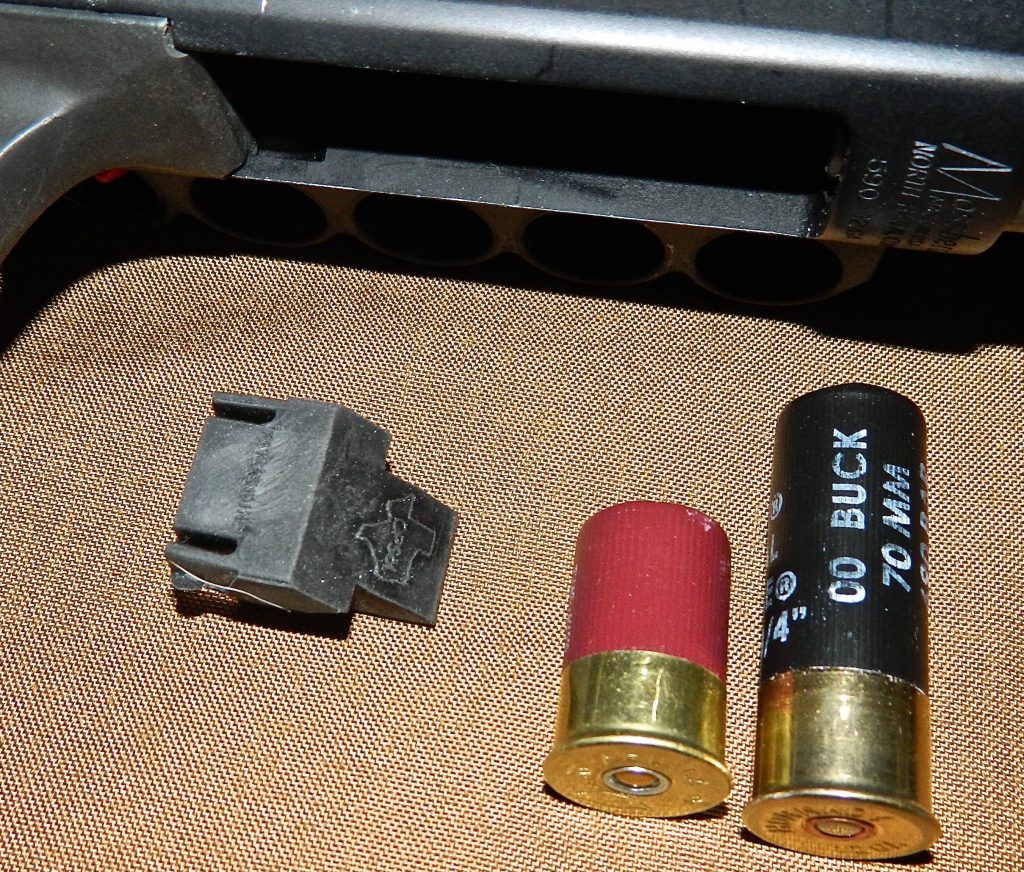
ACCESSORIES
While generally categorized as accessories, two things I think should be mandatory on a fighting shotgun: a sling and a high-intensity white light.
I have heard some folks say a sling has no place on a shotgun. I disagree. First, it allows both hands free for a multitude of purposes. For example, holding a muzzle-heavy shotgun while trying to open a door with one hand or calling for help on a cell phone is awkward. A sling alleviates this to a large degree. A sling also lets the user transition to a handgun using a two-handed grip without dropping the shotgun on the deck.
My go-to sling for carbines, shotguns, and AKs is the Blue Force Gear VTAC two-point sling. Pushing forward on a tab on the sling takes up slack and keeps the weapon close to the body. Pulling the tab backward puts in more slack, returning it to your pre-adjusted shooting length.
I am a huge proponent of dedicated lights on guns that will be used for defensive purposes—bright lights! You can’t shoot what you can’t identify. While a cheap flashlight with low lumens may let you see someone, it is not bright enough to see if he has a weapon in his hand. I want to be able to count the fingers on the hand and see a button on the threat’s shirt.
Hansen’s Mossberg 590A1 is equipped with Streamlight TLR-1 HPL attached to Magpul handguard. At 775 lumens, light has a beam distance of 438 meters. It features constant on, momentary on, and strobe modes.
Don’t get sucked in by the “just as good as” TV commercials—there’s a reason those lights sell for $19.95 and they throw in a second light for free.
This is your life and the lives of your loved ones we’re talking about, so bite the bullet (no pun intended) and buy quality the first time. Names such as Elzetta, Streamlight, and SureFire come to mind.
Back this up with a handheld light for searching and employing if the primary weaponlight goes down, and seek instruction on how to use the handheld with a shotgun.
SUMMARY
In the last several years, many have said the shotgun has been made obsolete by carbines such as the AR-15. In my opinion, nothing could be further from the truth.
For farmers and ranchers, there are “bang,” whistle, and flash rounds to scare off varmints and birds from crops.
Private citizens protecting the castle can use buckshot—and in rural areas slugs—against intruders with confidence.
Peace officers have a wide range of munitions to choose from, including slugs, buckshot, gas rounds, less-than-lethal rubber balls and beanbags, breaching rounds, flares, and more.
Once you get past the misconceptions and outright myths, the shotgun is still one of the most versatile and effective firearms we have.
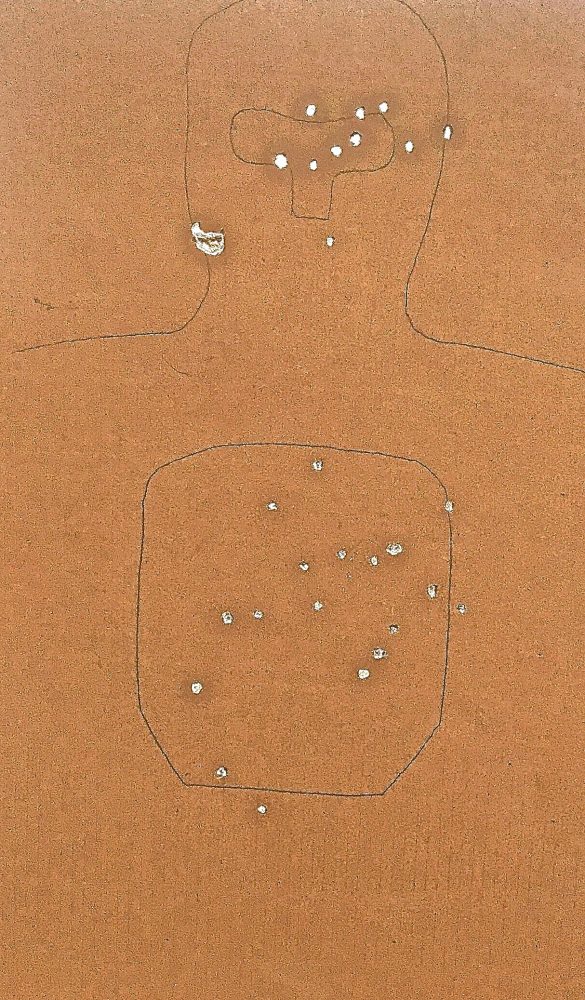
SOURCES
AGUILA AMMUNITION
(888) 452-4019
www.aguilaammo.com
BLUE FORCE GEAR, INC.
(877) 430-2583
www.blueforcegear.com
ELZETTA DESIGN, LLC
(859) 707-7471
www.elzetta.com
HORNADY MFG. CO.
(800) 338-3220
www.hornady.com
MAGPUL INDUSTRIES CORP.
(877) 4MAGPUL
www.magpul.com
O.F. MOSSBERG & SONS, INC.
(203) 230-5300
www.mossberg.com
OPSOL MINI-CLIP
www.opsolmini-clip.com
REMINGTON ARMS COMPANY, INC.
(800) 243-9700
www.remington.com
STREAMLIGHT, INC.
(800) 523-7488
www.streamlight.com
SUREFIRE, LLC
(800) 828-8809
www.surefire.com
TACSTAR
(800) 255-9626
www.tacstar.com
